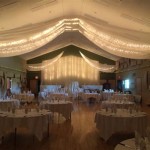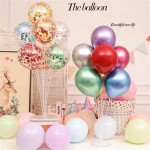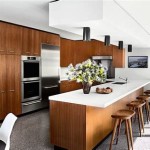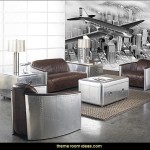Living Room Shelves Decorating Ideas: Elevating your Space with Style and Functionality
Living room shelves offer significant potential for both aesthetic enhancement and practical organization within a home. Thoughtful decoration of these shelving units can transform a mundane space into a visually engaging and personalized environment. The following guide provides detailed strategies for optimizing living room shelves, offering a range of decorating ideas to suit various styles and preferences.
1. Defining the Shelf's Purpose: Functionality First
Before embarking on any decorative endeavor, it is crucial to establish the primary function of the shelves. Are they intended primarily for storage, display, or a combination of both? This initial assessment dictates subsequent decisions regarding the types of items to be included, their placement, and the overall aesthetic. If storage is the top priority, then a more organized and utilitarian approach is required, potentially incorporating closed storage boxes or baskets to conceal less visually appealing items. Conversely, if display holds precedence, the focus shifts to showcasing curated collections, artwork, and decorative objects.
2. The Rule of Three: A Foundation for Visual Harmony
A fundamental principle in design is the "rule of three." This principle suggests grouping items in odd numbers, most commonly trios, to create a balanced and visually appealing arrangement. This technique applies across various decorative elements, from books and framed photographs to decorative objects and plants. Employing this rule prevents the arrangement from appearing overly symmetrical or static, fostering a more dynamic and natural aesthetic. For example, a shelf could feature a stack of three books, a small decorative sculpture, and a potted plant, creating a cohesive visual unit.
3. Color Coordination and Contrast: Crafting Visual Interest
Color plays a pivotal role in shelf decor. Consider the existing color palette of the living room and select items that either complement or contrast with those hues. A monochromatic approach, utilizing variations of a single color, evokes a sense of calmness and cohesion. Alternatively, introducing pops of contrasting colors can inject energy and excitement. For instance, if the room features a neutral palette, colorful books, vibrant artwork, or bold decorative objects can create a striking focal point. The strategic use of color establishes visual hierarchy and prevents the shelf from appearing cluttered or disorganized.
4. Varying Heights and Textures: Building Depth and Dimension
Monotony can be a design killer. The most successful shelf arrangements embrace variation in height and texture. Avoid placing items of uniform size or shape; instead, incorporate pieces of varying heights, from tall vases to low-lying trays. This creates visual interest and prevents the shelves from appearing flat. Moreover, employing diverse textures, such as smooth ceramics, rough-hewn wood, and soft textiles, adds a tactile dimension to the display. Combining these textures enhances the visual richness and allows the eye to explore the different elements within the arrangement. For example, place a tall vase next to some books, then next to a small wooden tray. This creates a visually appealing and varied display.
5. Curating Collections and Personalizing the Space
Shelves provide an ideal opportunity to showcase personal collections and items of sentimental value. Displaying cherished objects, such as family photographs, travel souvenirs, or antique finds, transforms the shelving unit into a reflection of personal interests and experiences. Grouping similar items together, such as a collection of vintage cameras or a series of framed maps, creates a cohesive and visually impactful display. Incorporating personal items elevates the shelves beyond mere decoration, infusing the living room with character and individuality, making the space truly a home.
6. Incorporating Greenery: Bringing Life and Freshness
Adding plants to living room shelves introduces a touch of nature and freshness. Choose plants suited to the available light conditions and shelf space. Trailing plants like pothos or ivy can cascade down from higher shelves, adding a dynamic and organic element. Smaller potted plants, such as succulents or air plants, can be placed on lower shelves, injecting bursts of color and texture. Carefully consider the size and shape of the plants in relation to the other items on the shelf. For instance, a large plant can serve as a focal point, while smaller plants can act as complementary accents. Additionally, select decorative pots and planters that harmonize with the overall aesthetic of the room.
7. Balancing Aesthetics and Functionality: Combining Display and Storage
Many living rooms require shelves that serve both a display and storage function. This necessitates a mindful approach to ensure that the shelves remain visually appealing while also meeting practical needs. Incorporate a mix of decorative and functional items. For example, use attractive baskets or decorative boxes to store items that are not meant to be displayed directly, like remote controls or documents. Arrange books both horizontally (stacked) and vertically (standing) for varied visual appeal. Leave some shelf space open to avoid a cluttered look, showcasing the selected items to their best advantage.
:strip_icc()/103066793-64a89373c0804b45bf18933ef74cba61.jpg?strip=all)
Open Shelving Ideas For Every Room

Shelves In The Living Room Stonegable

12 Tips And Secrets For How To Decorate Shelves A Free Checklist Worthing Court Diy Home Decor Made Easy

680 Decorating Shelves Ideas Home Decor

310 Shelf Decor Ideas In 2025 Home

How To Style Open Shelves 3 Tips For An Uncluttered Look House By Hoff

9 Tips For Styling Your Living Room Shelves Like A Pro Houzz Ie

Shelf Styling Inspiration Decor Living Room Shelves

Open Shelving Decorating Ideas

Four Easy Tips For Decorating Built In Shelves Our Hammock House
Related Posts







